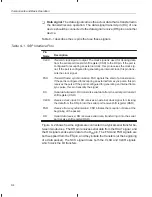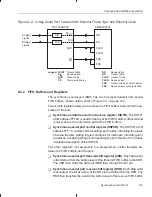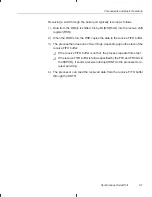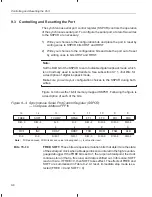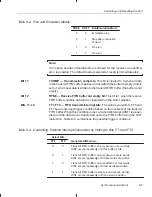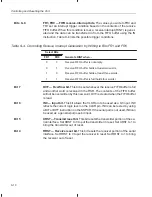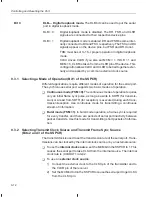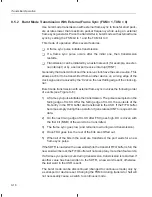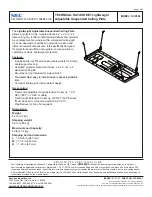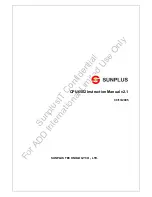
Components and Basic Operation
9-5
Synchronous Serial Port
Figure 9–2. 2-Way Serial Port Transfer With External Frame Sync and External Clock
TMS320C203
TLC320AD55C
Analog
signal
A/D
D/A
Analog
signal
DR
DX
CLKX
CLKR
FSX
FSR
D
OUT
D
IN
SCK
FS
Legend: DOUT Transmit data
DR
Receive data
DIN
Receive data
DX
Transmit data
SCK
Clock source
CLKX
Transmit clock
FS
Frame sync source
CLKR
Receive clock
FSX
Transmit frame synchronization
FSR
Receive frame synchronization
9.2.2
FIFO Buffers and Registers
The synchronous serial port (SSP) has two four-level transmit and receive
FIFO buffers (shown at the center of Figure 9–1 on page 9-3).
Two on-chip registers allow you to access the FIFO buffers and control the op-
eration of the port:
-
Synchronous data transmit and receive register (SDTR). The SDTR,
at I/O address FFF0h, is used for the top of both FIFO buffers (transmit and
receive) and is the only visible part of the FIFO buffers.
-
Synchronous serial port control register (SSPCR). The SSPCR, at I/O
address FFF1h, contains bits for setting port modes, indicating the status
of a data transfer, setting trigger conditions for interrupts, indicating error
conditions, accepting bit input, and resetting the port. Section 9.3 includes
a detailed description of the SSPCR.
Two other registers (not accessible to a programmer) control transfers be-
tween the FIFO buffers and the pins:
-
Synchronous serial port transmit shift register (XSR). Each data word
is transferred from the bottom level of the transmit FIFO buffer to the XSR.
The XSR then shifts the data out (MSB first) through the DX pin.
-
Synchronous serial port receive shift register (RSR). Each data word
is accepted, one bit at a time, at the DR pin and shifted into the RSR. The
RSR then transfers the word to the bottom level of the receive FIFO buffer.














